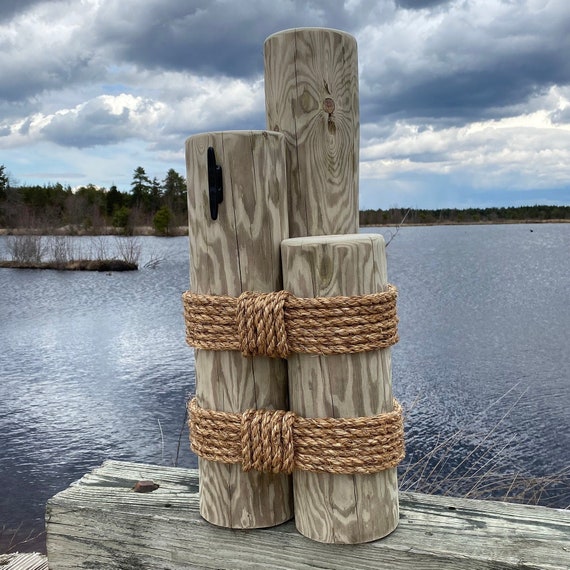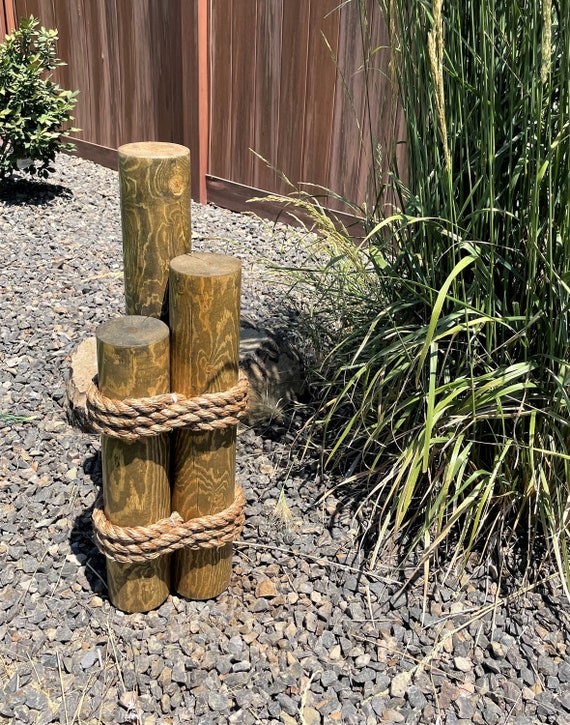In my journey of home improvement and landscaping, I stumbled upon a charming element that instantly elevated the aesthetics of my outdoor space: decorative pilings with rope. These elements not only serve a decorative purpose but also bring a rustic charm that can transform any area into a cozy retreat. In this comprehensive guide, we’ll explore everything you need to know about decorative pilings with rope, from design ideas to maintenance tips, ensuring you can make the most out of these beautiful additions to your environment.
What Are Decorative Pilings?
Decorative pilings are vertical posts or columns that serve a decorative purpose in gardens, yards, or outdoor spaces. They can mimic the look of traditional structural pilings but are mainly used for aesthetic reasons rather than structural support. Often adorned with natural elements like rope, these pilings can enhance the rustic character of your property.
Types of Decorative Pilings
- Wooden Pilings: Classic and stylish, wooden pilings can be sourced from various types of timber, adding warmth to your space.
- Concrete Pilings: Offered in various finishes, concrete pilings can provide a modern touch.
- Metal Pilings: Stainless steel or wrought iron pilings bring a sleek and industrial look to your yard.
Benefits of Decorative Pilings with Rope
Integrating rope with decorative pilings is not just about looks; it offers multiple benefits:
- Aesthetic Appeal: The combination of wood and rope exudes a rustic charm that can beautify any setting.
- Durability: High-quality rope, especially marine-grade, is resistant to wear and tear and weather elements.
- Versatility: Can be utilized in numerous ways, from garden borders to making trellises for climbing plants.
Design Ideas for Incorporating Decorative Pilings with Rope
Here are some creative ideas from my personal projects and experiences on how to effectively incorporate decorative pilings with rope into your outdoor settings:

1. Garden Borders
Use decorative pilings to delineate garden spaces. Adorn them with rope to create an inviting barrier that adds depth and texture to your garden.
2. Trellises for Climbing Plants
Create trellises by securing rope between pilings. This setup allows your plants to climb while also providing a visually striking backdrop.

3. Pathway Markers
Line your garden path with decorative pilings topped with rope to guide visitors through your outdoor spaces.
4. Rustic Fencing
For a unique fencing solution, consider integrating pilings and rope in a staggered pattern to create rustic-looking barriers.

Choosing the Right Decorative Pilings for Your Space
Selecting the right decorative pilings is crucial. Here are some considerations to keep in mind:
Material Considerations
Wood
Wooden pilings are perfect for a natural look but require regular maintenance to prevent rot.

Concrete
Concrete offers longevity but may lack the warmth that wood provides.
Metal
Metal offers durability and is less prone to wear, but might appear cold compared to wood.

Size and Dimensions
Ensure the size of the pilings aligns with the scale of your outdoor space. Taller pilings can create vertical interest in smaller areas, while shorter ones work well in expansive gardens.
Color and Finish
Natural finishes enhance the rustic feel, but painted or stained pilings can also complement your home’s color palette nicely.

Comparing Decorative Pilings Materials
| Material | Pros | Cons |
|---|---|---|
| Wooden Pilings | Natural, warm look; customizable; eco-friendly | Requires maintenance; can rot over time |
| Concrete Pilings | Very durable; low maintenance; versatile design | Can be heavy; less aesthetic warmth |
| Metal Pilings | Long-lasting; modern appeal; resistant to pests | Can be costly; may rust if not treated |
Installation of Decorative Pilings with Rope
Installing decorative pilings with rope is a rewarding DIY project. Here’s how I did it:
Step-by-Step Installation Guide
- Gather Your Materials: Choose your pilings and rope. Measure and cut your rope to the desired lengths.
- Prepare the Site: Mark your desired location for the pilings and clear any debris or foliage.
- Dig Holes: Using a post hole digger, create holes for the pilings, ensuring they are deep enough for stability.
- Insert Pilings: Place your pilings into the holes and fill with dirt or concrete for stability.
- Attach Rope: Wrap the rope around the pilings, securing it tightly. You can create various patterns depending on your design preference.
Tools You’ll Need
- Post hole digger
- Shovel
- Measuring tape
- Rope cutter or scissors
- Level
Pros and Cons of Decorative Pilings with Rope
Like all design elements, decorative pilings with rope come with their own set of advantages and disadvantages:
Pros
- Enhances visual interest in outdoor spaces
- Affordable way to elevate landscapes
- Provides functional uses (like trellises) while being decorative
Cons
- Requires maintenance, especially wooden pilings
- May not suit all architectural styles
- Installation can be time-consuming
Maintenance Tips for Decorative Pilings with Rope
To keep your decorative pilings looking their best, here are some maintenance tips I’ve found helpful:
Regular Inspections
Check for signs of wear and tear, especially if using wooden materials. Look for rotting, splintering, or loose rope.
Cleaning
Clean the rope and pilings regularly using a mild detergent and brush to prevent dirt build-up and maintain appearance.
Weather Protection
If using wooden pilings, apply a weatherproof sealant annually to protect them from moisture and decay.
Frequently Asked Questions (FAQs)
What types of rope are best for decorative pilings?
For decorative pilings, natural fiber ropes like jute or sisal offer a rustic charm, while synthetic options like nylon are durable and weather-resistant.
Can decorative pilings be used indoors?
Absolutely! Decorative pilings can also enhance indoor spaces, serving as room dividers or decorative columns in large living areas.
How long do decorative wooden pilings last?
With proper care and maintenance, decorative wooden pilings can last anywhere from 10 to 30 years, depending on the type of wood and environmental conditions.
Conclusion
Decorative pilings with rope are more than just a simple design element; they can dramatically enhance the look and feel of your outdoor spaces. Whether you’re aiming for rustic charm or a sleek modern vibe, these versatile features can make any area feel more inviting and aesthetically pleasing. I encourage you to explore how you can incorporate them into your home, and happy decorating!